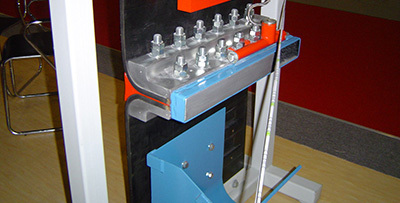News Center
Hezi technology focuses on the research and development of "rapid seamless conveyor belt joint sleeve" innovative technology project

NEWS CENTER

News Details
How to Identify and Fix Conveyor Rubber Belt Fractures Like a Pro
Release time:
2024-11-19
Master the art of identifying and repairing conveyor rubber belt fractures with our comprehensive guide. Learn expert techniques, tips, and tools necessary for effective maintenance and prolonged equi
Understanding Conveyor Rubber Belt Fractures
Conveyor systems are vital for various industries, facilitating the smooth transportation of materials and products. Among the key components of these systems, the conveyor rubber belt plays a crucial role. However, these belts are susceptible to wear and tear, leading to fractures that can disrupt operations. In this article, we will explore how to identify and fix conveyor rubber belt fractures like a professional.
What Causes Conveyor Rubber Belt Fractures?
Understanding the causes of conveyor rubber belt fractures is essential for effective prevention and repair. Several factors contribute to this issue, including:
1. Material Composition
The type of rubber used in the belt affects its durability. Inferior materials are more prone to fractures. Ensure you opt for high-quality rubber that can withstand the conditions it will face.
2. Environmental Conditions
Extreme temperatures, humidity, and exposure to chemicals can weaken the rubber. Assess the environment in which the conveyor operates to determine the best belt material.
3. Mechanical Issues
Misalignment of the conveyor components, excessive tension, or worn-out pulleys can cause strain on the belt, leading to fractures. Regular maintenance checks can help identify these issues early.
4. Overloading
Exceeding the weight capacity of the conveyor belt can lead to undue stress and eventual fractures. Always adhere to the manufacturer's specified load limits.
Signs of Conveyor Rubber Belt Fractures
Identifying fractures early can save time and money. Here are some common signs to watch for:
1. Visible Cracks and Tears
Examine the belt regularly for any visible cracks or tears. These are clear indications that the belt needs immediate attention.
2. Uneven Wear Patterns
If you notice uneven wear on the surface of the belt, it may be an indication of underlying issues that could lead to fractures.
3. Slipping or Stalling
If the belt is slipping or stalling during operation, it may be struggling under the weight or pressure, signaling potential fractures.
4. Noise During Operation
Unusual noises, such as grinding or squeaking, may point to friction between the belt and other components, suggesting possible fractures.
Tools and Materials Needed for Repairs
Before attempting to fix a fractured conveyor rubber belt, gather the necessary tools and materials:
1. Safety Gear
Ensure you have gloves, goggles, and a hard hat to protect yourself during the repair process.
2. Belt Repair Kits
Invest in a comprehensive belt repair kit that includes adhesives, patches, and tools for applying them.
3. Measuring Tools
Use measuring tools to assess the length and width of the fractures accurately.
4. Cleaners and Solvents
To prepare the surface for repairs, gather suitable cleaners and solvents that can remove dirt and grease.
Step-by-Step Guide to Repairing Conveyor Rubber Belt Fractures
Repairing a conveyor rubber belt fracture requires attention to detail and proper methodology. Follow this step-by-step guide to ensure a professional repair job.
Step 1: Safety First
Before starting any repair work, ensure the conveyor system is turned off and locked out to prevent accidental operation.
Step 2: Assess the Damage
Examine the extent of the fracture. Determine whether it's a minor crack or a significant tear. This will dictate the repair approach.
Step 3: Clean the Area
Using the appropriate cleaner, thoroughly clean the area around the fracture. This ensures proper adhesion of the repair materials.
Step 4: Cut a Patch
If the fracture is severe, cut a rubber patch that extends beyond the fracture on all sides. Make sure the patch matches the thickness of the original belt.
Step 5: Apply Adhesive
Follow the instructions provided in your belt repair kit to apply adhesive to both the patch and the fractured area. Allow it to set as per manufacturer guidelines.
Step 6: Position the Patch
Carefully position the rubber patch over the fracture. Use pressure to ensure a secure bond.
Step 7: Allow for Curing
Let the adhesive cure completely before operating the conveyor again. This ensures a strong and lasting repair.
Preventive Measures for Conveyor Rubber Belt Longevity
To extend the life of your conveyor rubber belts and minimize fractures, consider implementing these preventive measures:
1. Regular Inspections
Schedule regular inspections to catch any signs of wear or damage early. This proactive approach can prevent costly repairs down the line.
2. Proper Loading Techniques
Train your staff on proper loading techniques to avoid overloading the conveyor system.
3. Environmental Controls
If possible, control the environmental conditions around the conveyor system to minimize exposure to harmful elements.
4. Maintenance Routine
Establish a regular maintenance routine that includes checking for belt alignment, tension, and overall condition.
When to Seek Professional Help
While many minor repairs can be handled in-house, some situations require professional assistance. Consider seeking expert help in the following scenarios:
1. Extensive Damage
If the damage to the belt is extensive and beyond a simple repair, consult a professional for a comprehensive fix.
2. Complex Mechanical Issues
If misalignment or other mechanical issues are causing repeated fractures, it’s best to have a professional assess and resolve the underlying problem.
3. Lack of Experience
If you or your team lack experience with conveyor repairs, consider hiring a professional to avoid further damage and ensure safety.
Conclusion
Identifying and fixing conveyor rubber belt fractures is essential for maintaining the efficiency and productivity of your operations. By understanding the causes and signs of fractures, utilizing the right tools, and following a systematic repair process, you can handle these issues like a pro. Implementing preventive measures will further enhance the longevity of your conveyor belts, ultimately saving time and costs in the long run. Stay vigilant and proactive in your maintenance efforts, and your conveyor systems will run smoothly for years to come.
Frequently Asked Questions
1. How often should I inspect my conveyor belts?
Regular inspections should be conducted at least once a month, or more frequently if the conveyor system is in continuous use.
2. Can I repair a conveyor belt myself?
Yes, minor repairs can often be performed in-house with the right tools and materials. However, consult a professional for extensive damage.
3. How can I prevent rubber belt fractures?
Implement regular inspections, avoid overloading, and maintain proper environmental controls to minimize the risk of fractures.
4. What is the best material for a conveyor rubber belt?
High-quality rubber that is suited for your specific operating conditions is ideal. Consult with manufacturers for recommendations.
5. How long does it take for adhesive to cure?
Curing time varies by adhesive type. Generally, allow at least 24 hours before operating the conveyor again to ensure a solid bond.

Recommend News





























